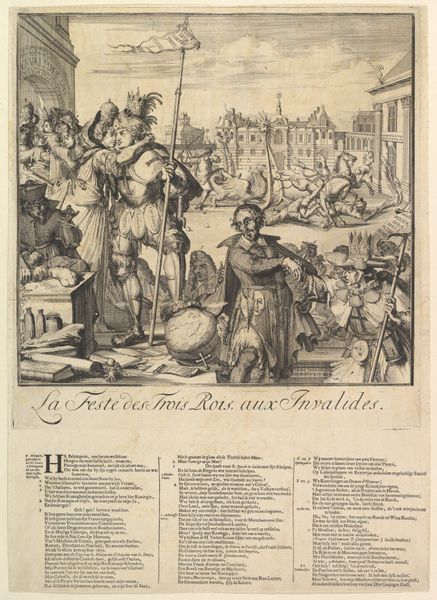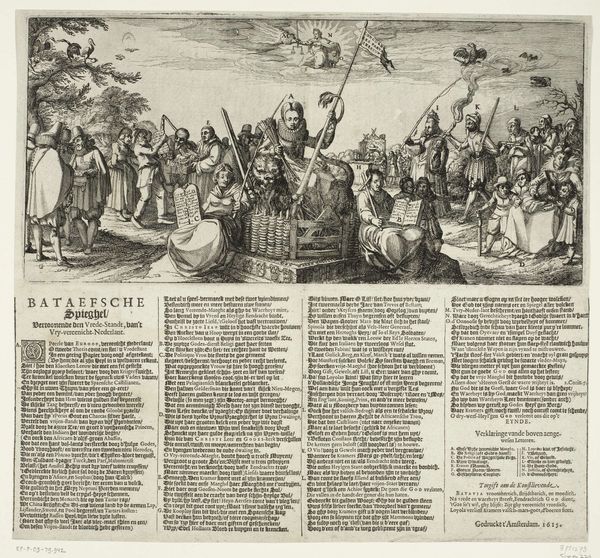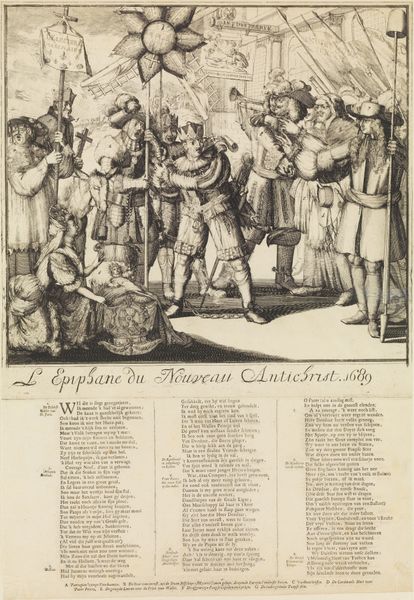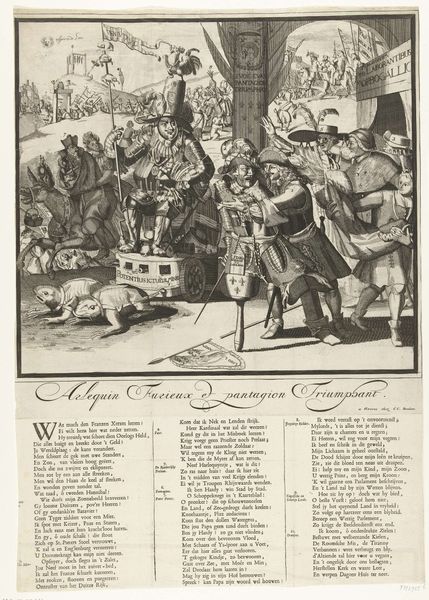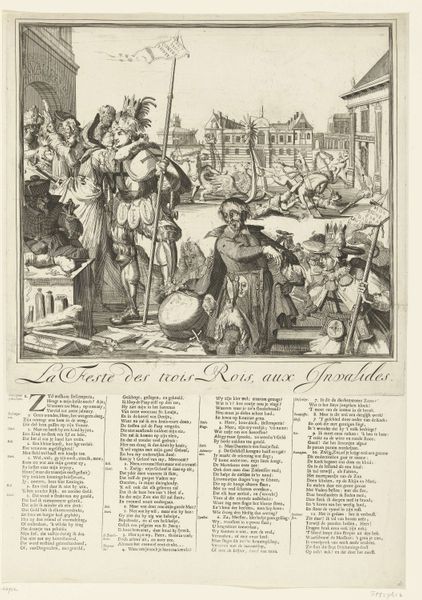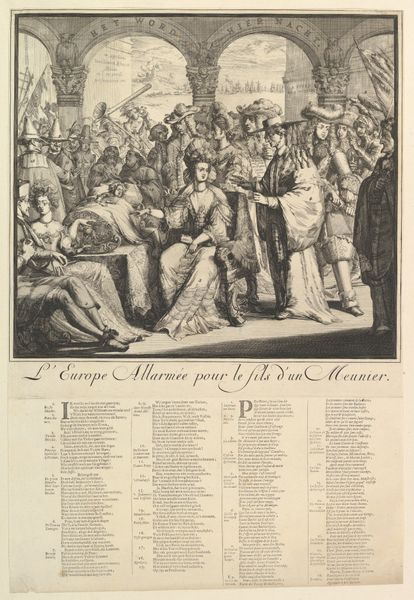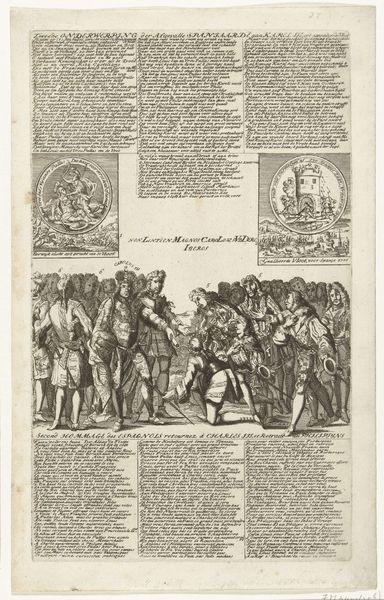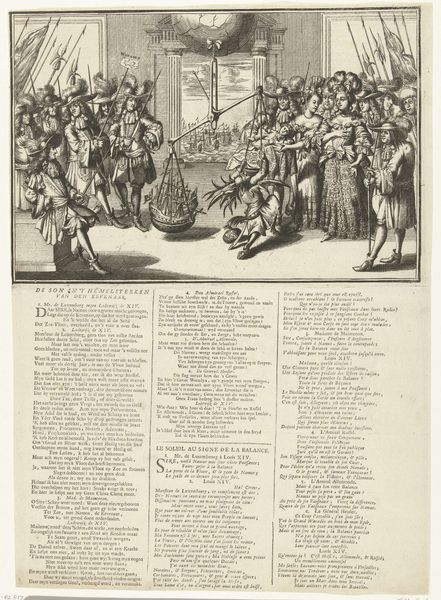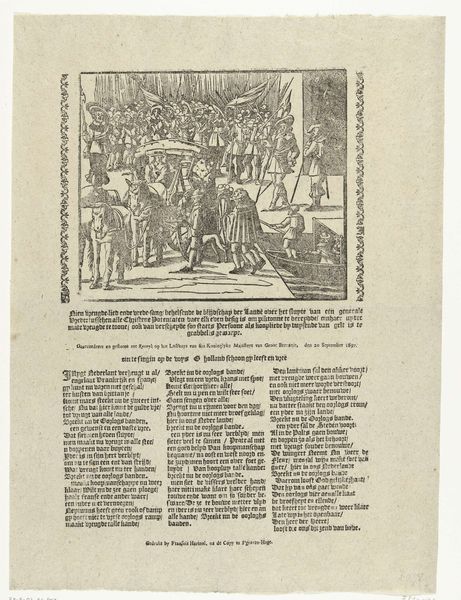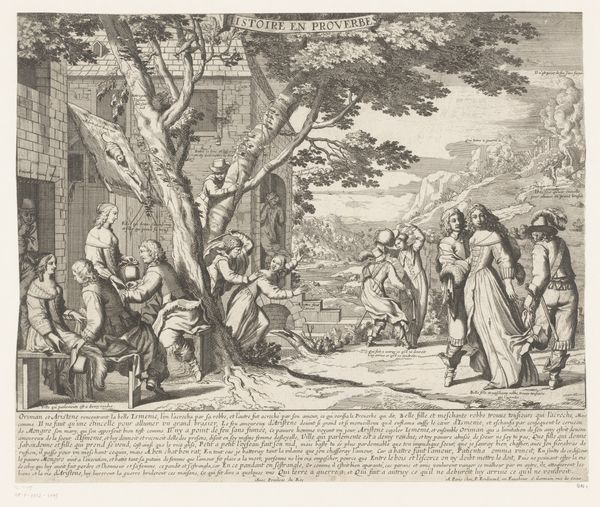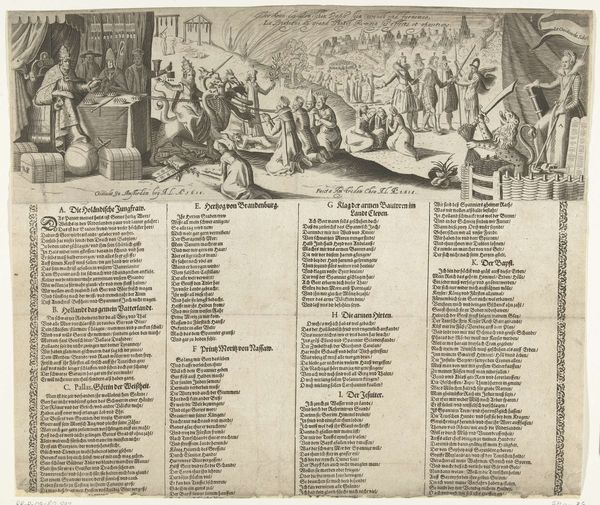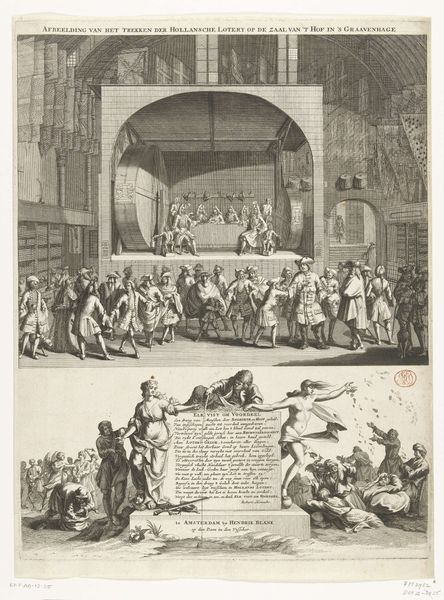
drawing, print, etching, engraving
#
drawing
#
baroque
# print
#
etching
#
history-painting
#
engraving
Dimensions: sheet: 21 1/4 x 15 1/2 in. (54 x 39.4 cm)
Copyright: Public Domain
Romeyn de Hooghe made this engraving, "Qualis vir Talis Oratio," which translates to "As the man, so is his speech," sometime between 1645 and 1708. During the Dutch Golden Age, the Netherlands was a hub of global commerce and cultural exchange. De Hooghe's detailed engraving satirizes the Dutch elite, revealing the intersection of wealth, power, and social status. The scene depicts a lavish room with a dying man surrounded by concerned onlookers, while the inscription suggests a commentary on the man's character being reflected in his final words or actions. I'm struck by how the artist uses visual cues like dress and setting to signal the social standing and moral standing of the figures. The presence of merchants, politicians, and clergy illustrates the social and political landscape of the time. It's a reminder that art can act as a mirror, reflecting societal values and sparking conversations about wealth, morality, and power.
Comments
No comments
Be the first to comment and join the conversation on the ultimate creative platform.
